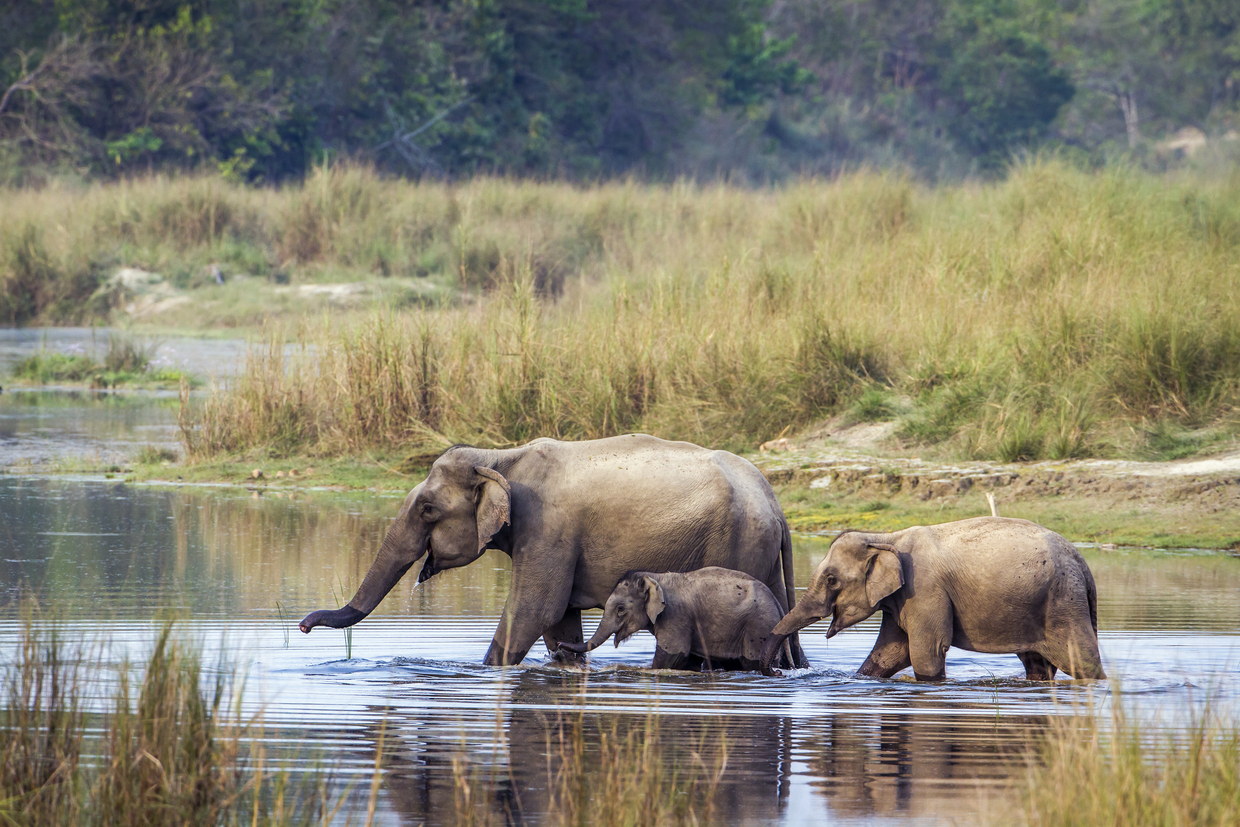Man-eaters be gone: Nepal’s creative solution to dealing with its big cat problem

During his two-day state visit to Nepal in April, the Emir of Qatar, Sheikh Tamim bin Hamad Al-Thani, announced that Kathmandu is to gift two elephants to Doha under a memorandum of understanding between the two nations.
Nepal’s Department of National Parks and Wildlife Conservation (DNPWC), however, wanted the country to engage in ‘tiger diplomacy’ instead. DNPWC director-general Sindhu Dhungana told RT: “If any country wishes to obtain a tiger from us, we can provide one as part of tiger diplomacy. Wildlife diplomacy is practiced worldwide, and I believe it will aid tiger conservation efforts in Nepal.”
With an ever-increasing number of tigers proliferating, his department faces public pressure. “Tigers frequently encroach on human settlements and pose a threat to humans,” he said. “People often urge us to keep ‘our’ tigers confined to the jungle.”
According to a 2022 Tiger Census, Nepal is home to 355 tigers, an increase from 121 in 2009. The goal set at the 2010 St Petersburg Tiger Summit was to double the tiger population, a target the country had surpassed in 2018, with 235.
Nepal has found that some countries have specific preferences in wildlife. Indonesia wants deer, China wants one-horned rhinos, and Qatar wants the red panda. The DNPWC has set up a task force to figure this out.

The 2021 census of one-horned rhinos in Nepal came to 752. Nepal gave two pairs of one-horned rhinoceros to China in 2018, and the country has a history of providing these rhinos to Germany, Austria, the UK and the USA.
Krishna Acharya, secretary general of SAWEN, the South Asia Wildlife Enforcement Network, said that handing over animals is common internationally, if the wildlife population increases.
“There is no point in keeping a tiger in a cage,” Acharya tells RT. “Conservation should be prioritized wherever possible,” he said. “It does not matter where conservation takes place; the main objective is important, and that is conservation.”
So, the growing tiger population is now Nepal’s focus in conservation diplomacy, expanding its involvement in wildlife-management efforts.
Tigers attack Humans
Over the last five years in Nepal, approximately 75 people have been killed by tigers, with 22 in Bardiya National Park, which is home to 125 adult tigers. Nepal has four national parks – Parsa, Chitwan, Bardiya, and Suklafata. Bardiya has Nepal’s second-largest tiger population.
With the increase in human casualties and in damage to houses, farmhouses, animal husbandry and crops, DNPWC has found itself unable to provide relief.
“We don’t have the budget to assist people,” Dhungana told RT. “The number of victims has doubled compared to five years ago.”

The government’s policy on relief is an ex-gratia payment of $9,500 per death. According to DNPWC data, the government has distributed relief totalling about $1.2 million. Nonetheless, many have not received support.
Six months ago, Ram Bahadur KC, who lives in Bardiya, lost his cow to a tiger attack. Although he filed all the necessary documents, he has not yet received relief.
“It is not easy to receive assistance,” he said. “We have to approach different agencies for proof. We lost our cattle and crops to wildlife, but the relief is only in name and the process is difficult.”
However, Ashok Ram, warden at Bardiya, said that relief was prompt in the case of human casualties. “Due to a lack of proof, some individuals may not have received it,” he adds.

Tigers have problems too
Increasing incidents of human-wildlife conflict also pose a problem for tigers. Despite a growing demand to control them, the National Parks cannot simply cage problematic tigers. The DNPWC currently has 16 problematic tigers in cages. DNPWC spokesperson Bed Kumar Dhakal said they no longer have sufficient space.
“Almost all available space has been occupied,” he explained. “When we confine tigers to cages away from their natural habitat, it results in their unnatural demise.”
Tiger expert Chirabjibi Prasad Pokhrel emphasized that tigers are territorial wild animals and confining them to cages leads to suffering, and also to disease. “When we restrain tigers from their natural behavior by confining them, they develop various health issues such as leg pain,” he explains.
Tigers confined to cages have met unfortunate fates. For instance, a tiger was killed in March in a cage in Parsa National Park. This tiger had been captured around Chitwan National Park ten months previously, following an attack on cattle. Within a year, three tigers were killed in Parsa National Park and one in Bardiya National Park, all of which had been confined after being deemed problematic.
On the other hand, cases of tigers being intentionally killed through poisoning and shooting have also been identified.
In March, a tiger was discovered dead with gunshot wounds in the forest of Bara district near Parsa National Park. In the same month, another tiger was found poisoned in the forest adjacent to Chitwan National Park. Another was found killed in Kailali, near Bardiya National Park.

Experts suggest that Nepal should explore alternative methods of tiger management to address the situation.
“The current approach is unsustainable, and government agencies should promptly devise plans for tiger management,” says Pokhrel. The tiger expert proposed establishing large, natural enclosures for them, which could also serve as tourist attractions generating revenue.
“Another approach is conservation diplomacy, where countries interested in acquiring tigers can be provided with them.”
Nepal has announced the establishment of zoos in seven provinces, but this is yet to get underway. The DNPWC’s Dhakal says that, if zoos are ready, some tigers can be transferred. “It also can be a solution,” he said. “On the other hand, culling in the case of overpopulation is accepted international practice.”
Wildlife experts like Acharya of SAWEN are worried about increasing wildlife-human conflict. He says the conflict will impact Nepal’s long-term conservation efforts if it cannot be managed.














